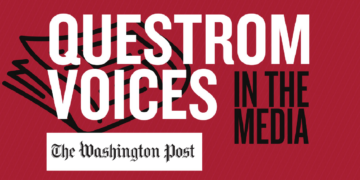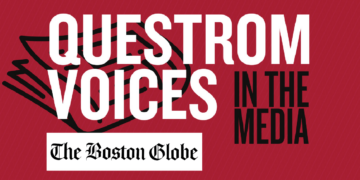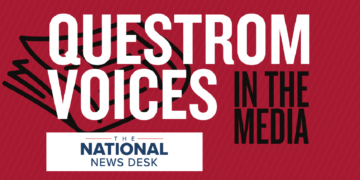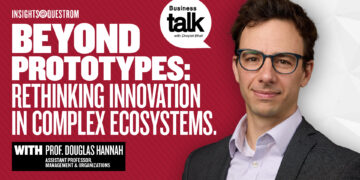In this Insights Q&A, Dean’s Research Scholar and Associate Professor in Marketing Monic Sun tackles the increasing influence of social media and other technologies on branding. How companies are adapting their marketing efforts to the new digital landscape is an ever-evolving topic, and one which she breaks down in this insightful analysis of current and future trends.
What are some of the biggest changes that digital technology and social media have introduced for branding and marketing?
Recently, due to COVID, people are spending a much larger share of their time in front of the computer or in rooms equipped with smart speakers. This means that more of people’s lives are being observed and recorded online, and the capacity to analyze lifestyle and preferences is increasing. Personally, I have found the targeting accuracy of the Facebook ads to be astonishing. I am seeing more niche brands across different websites that are well suited to my preferences, some being new brands targeting at me, others being retargeted ads from a brand that I have recently looked at. It seems that overall the relevance of the average ad is going up.
Does the “balkanization” of social media enable brands to send ever-more-specific messages to narrower and narrower subgroups? What are the risks of such a tactic?
I am personally a big fan of diversity and a big tail of small brands. The key tradeoff here is breadth versus depth: should we try to expose the consumer to a wider range of brands or should we try to limit exposure to a few brands that we think would match well? From the perspective of a small business owner, it can be challenging to pay the high price of a well-targeted audience. Then what ends up happening is that the companies with large marketing budgets grab the attention of the best matched consumers, with probably a margin that is higher than average so that they can maintain their large marketing budgets. In the “end,” it may lead to a situation where consumers with high willingness to pay happily enjoy their high-margin and well-targeted products, while others happily enjoy finding good deals from offline stores with reasonably-priced products that appeal to the mass-market taste.
What are some examples of brands that have really thrived in the digital age- either as newcomers able to capitalize on the technology, or old-fashioned brands that successfully evolved?
Many international retailers took off during Covid through Amazon, Etsy, Facebook, or other platforms, since they are now better able to reach American consumers. My personal favorites are Roselinlin and Notebook Therapy. Some domestic food service companies also are doing well: cookunitity is an app where you can select from hundreds from dishes from a selected group of New York chefs, and it is not only delicious, but has also very well reduced the need to wash dishes and handle excessive packaging.
User-generated content can drive engagement, but also comes with dangers for the brands associating with content they may not have chosen to produce. How do companies navigate this balance?
It seems that established, bigger companies tend to be more conservative as they have less to gain and more to lose from engaging in UGC than the smaller start-ups.
Finally, what trends on social media or with digital technology more broadly are likely to shape marketing and branding efforts in the near future?
I would bet on smart technologies that can collect information, predict REAL-TIME needs, and automatically customize the service to meet such needs. For example, news apps are now becoming better at understanding what a particular consumer wants to read, where, and at what time. Today’s Highlights is a Chinese app that has been pushing customized news items to consumers for news and it is known to have a good balance between exploitation (of consumer’s time by serving them well matched news) and experimentation (on consumer’s taste by showing them less relevant news and see if it would spark interest). Ultimately, marketing is about understanding people, and that is the purpose that new technologies should serve.
ABOUT OUR EXPERT

MONIC SUN
Associate Professor, Marketing
Monic Sun explores counter-intuitive consequences of digital technology for businesses. She has studied the effects of user-generated content, location-based targeting, social-networking sites, and peer-to-peer markets. She adopts a question-driven approach in her research and uses game theory, causal inferences, and experimentation. Her research has appeared in top marketing journals and popular media outlets such as BBC, Forbes, and NPR. She currently serves on the editorial boards of Marketing Science and Journal of Marketing Research. Prior to joining Questrom, Professor Sun served on the faculties of Stanford Graduate School of Business and USC Marshall School of Business. She holds a Ph.D. in Economics from Boston University and a B.Econ. from Peking University.




















